7 Anti-Inflammatory Foods Every Active Adult Should Eat

A little bit of inflammation is good for you—but when prolonged, inflammation can harm healthy cells. "Chronic inflammation is thought to be at the root of a number of diseases. It is like a smoldering fire inside of your body," registered dietitian and nutritionist Nancy Park tells Henry Ford Health. "The risk of heart disease, obesity, inflammatory bowel diseases, arthritis, Alzheimer's, psoriasis, and more could be reduced with an anti-inflammatory diet, as the nutrients in these foods contain properties known to ease inflammation." Here are seven foods known for their impressive anti-inflammatory benefits.
Salmon and Mackerel
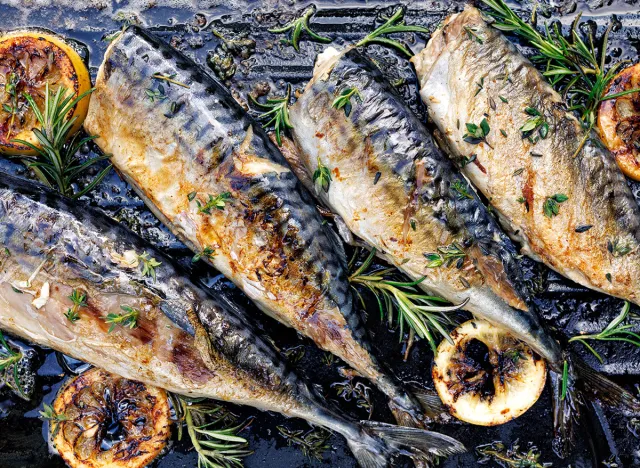
Fatty fish such as salmon and mackerel are shown to lower inflammation. "Arthritis is – for the most part – a disease of inflammation," says the Arthritis Foundation. "One way to calm inflammation is with medicine your doctor prescribes. Among the most potent edible inflammation fighters are essential fatty acids called omega-3s – particularly the kinds of fatty acids found in fish."
RELATED: This is the Optimal Amount of Protein You May Need Every Day, According to Expert
Avocados
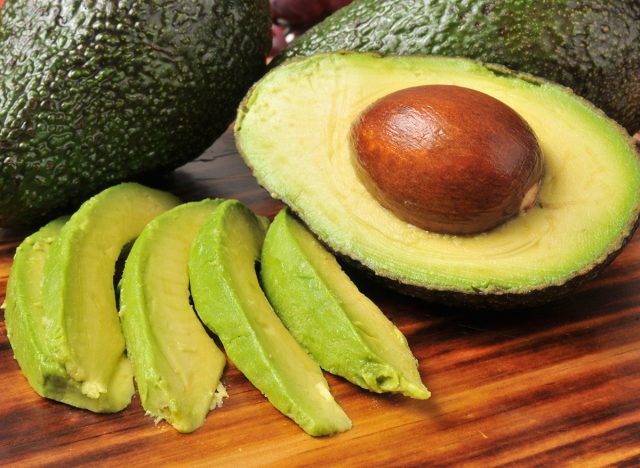
Avocados are versatile and full of healthy fats. "The rich, creamy texture of this fruit comes in part from its high concentration of anti-inflammatory monounsaturated fat," says the Arthritis Foundation. "Avocados are also rich in the carotenoid lutein. Unlike most fruits, avocados are a good source of vitamin E, a micronutrient with anti-inflammatory effects."
Walnuts
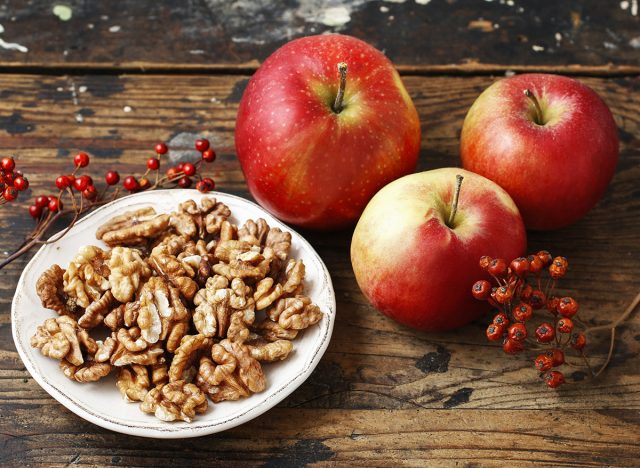
Walnuts are a great example of an anti-inflammatory nut. "Walnuts are a great source of alpha-linolenic acid (ALA), an omega-3 fatty acid that is important for reducing inflammation," says UC Davis Health. "In fact, it is the only nut significantly high in these omega-3 fatty acids. Their anti-inflammatory compounds may reduce the risk of heart disease."
RELATED: The #1 Thing You Must Sacrifice to Lose Weight Successfully
Olive Oil
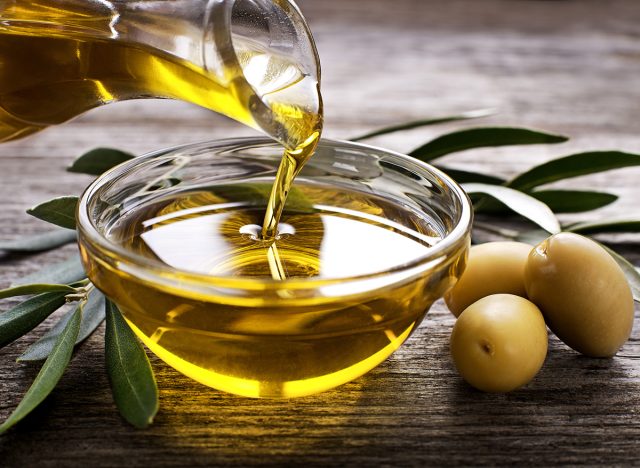
Olive oil is a staple in the heart-healthy Mediterranean diet for good reason. "Extra virgin olive oil can reduce inflammation, which may be one of the main reasons for its health benefits," Katherine D. McManus, MS, RD, LDN, tells Harvard Health. Olive oil's main anti-inflammatory effects are from antioxidants, one of which is oleocanthal. This antioxidant has been shown to work like ibuprofen, an anti-inflammatory drug."
Garlic

Garlic not only tastes delicious but has potent anti-inflammatory benefits. "As if it wasn't already super nutritious and low in calories, garlic also offers anti-inflammatory benefits," says VCU Health. "Garlic contains diallyl disulfide, an anti-inflammatory compound that limits the effects of pro-inflammatory cytokines. If you have sore and inflamed joints or muscles, you can rub them with garlic oil."
Cherries
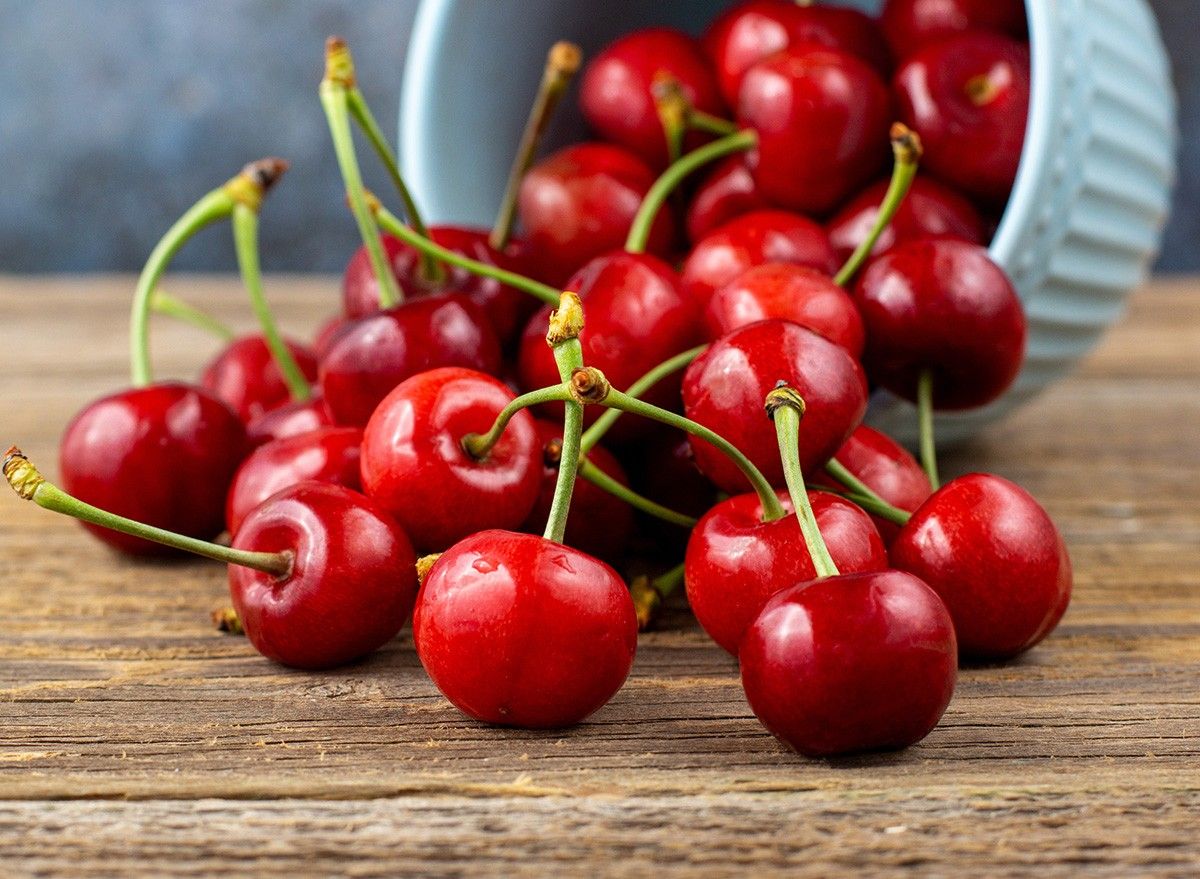
Add cherries to your anti-inflammatory menu. Cherries have garnered the lion's share of the research among stone fruits," says Harvard Health. "Some studies suggest that cherries can reduce pain and soreness after exercise as well as a reduced risk of gout attacks. The high levels of phenolic compounds in cherries, which have been linked to reduced inflammation, may be behind those benefits."
RELATED: Here Is How to Get "Tank Top Arms" for Summer
Citrus
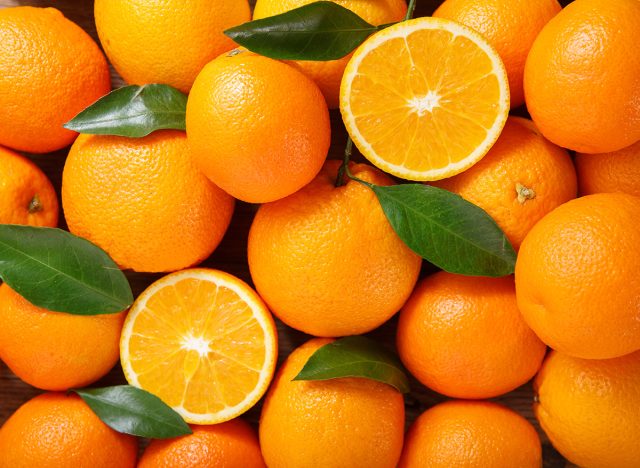
Citrus fruits are known for their anti-inflammatory nutrients. "Oranges, grapefruit, lemons, and limes are famously rich in vitamin C," says Harvard Health. "They also contain fiber, potassium, calcium, B vitamins, copper, and anti-inflammatory phytochemicals such as flavonoids and carotenoids. Though there is little human research on citrus, the nutrients found in citrus fruits have been associated with heart-protective effects."
💪🔥Body Booster: An anti-inflammatory diet helps with weight loss as well as overall health!




